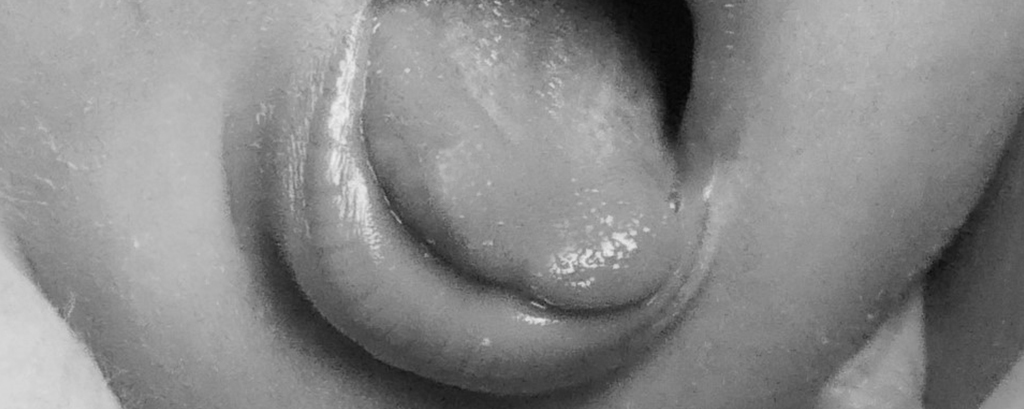
We are tongue tie specialists based in the North East of England.
Tongue tie affects around 4-11% of new-born babies. It’s more common in boys than girls, and sometimes runs in families.
What is a tongue tie?
Tongue tie is where the strip of skin connecting the baby’s tongue to the floor of the mouth is shorter than usual.
Some babies who have tongue tie don’t seem bothered by it. In others it can restrict the tongues movement making it harder to breastfeed. It may not become apparent until your baby has feeding problems. The front part of the tongue should be able to extend and cup the breast (or bottle teat) and draw it into the mouth, the back part of the tongue should lift and drop in a rhythmic motion allowing a good suck/swallow/breathe pattern, but when a baby cannot do this well it can impact on their feeding.
How is a tongue tie divided
Division of tongue tie – frenulotomy – is done by snipping the strip of skin known as the frenulum under the tongue. Blunt ended scissors are used and no anaesthetic. Most babies cry for a few seconds only. Bleeding is minimal and most babies feed straight after the procedure.
Aftercare
You will be given help afterwards to breastfeed. Most babies will feed with no problems, however some babies may take longer to adjust to their released tongue. Skilled support post procedure is essential.
Symptoms
For Baby
• Slipping off the breast
• Failure to latch
• Fussing at breast
• Clicking
• Choking or spluttering
• Poor weight gain or weight gain may be good but your baby is feeding continuously
• Inconsistent nappy output
• Colic/reflux symptoms that are not resolved with medication
For Mum
• Pain which does not improve with good positioning and has no other explanation such as Raynauld’s Syndrome or Thrush
• Low milk supply after an initially good supply
• Recurrent mastitis (inflammation of the breast) and or blocked ducts
What the evidence says
In 2005 NICE issued guidance stating that division of tongue tie is a safe procedure with proven efficacy in helping mothers to continue to breastfeed.
You can find more information at https://www.nice.org.uk/IPG149. Understanding NICE guidance – information for people considering the procedure for their baby, and the public.
Lip ties
A lip tie is an extra piece of skin that goes from the upper gum to behind the upper lip, usually in the middle of the lip.
Currently there is no published evidence supporting a link between breastfeeding issues and lip tie.
The Association of Tongue tie Practitioners states: The National Institute for Health and Care Excellence (NICE) have not issued any guidance on this issue and therefore training is not available in the UK in lip tie division for practitioners. Currently nurse/midwife tongue-tie practitioners working in the UK cannot offer lip tie division as the Nursing and Midwifery Council’s Code of Conduct states that nurses, midwives and health visitors must ‘deliver care based on the best available evidence or best practice’ and ensure any advice given is evidence based if suggesting healthcare products or services. On the rare occasions that lip ties are divided by surgeons in the NHS it is usually done in relation to concerns about dental issues, not breastfeeding. If you have concerns about lip ties we suggest you discuss this with your dentist. (https://www.tongue-tie.org.uk/position-statements/)
